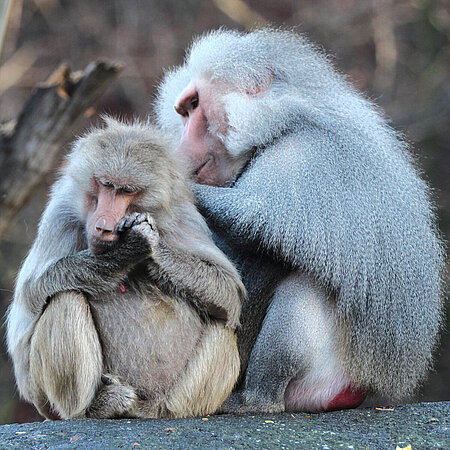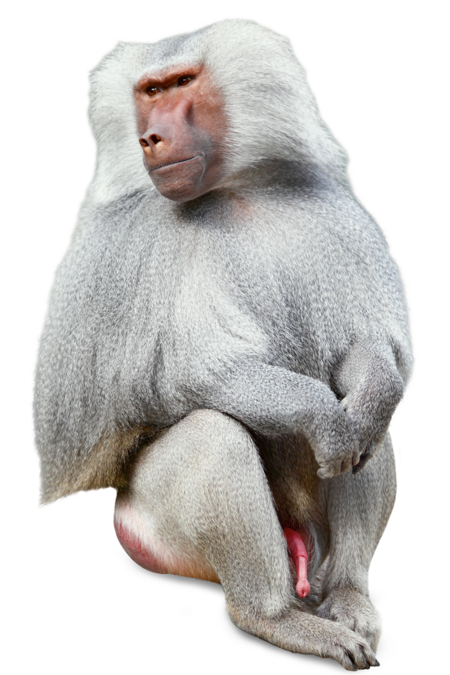Hamadryas baboon
Papio hamadryas

- FamilyOld World monkeys (Cercopithecidae)
- Weight♀ 10 – 15 kg,♂ 20 – 30 kg
- HabitatSemi-deserts, steppes, grasslands, short-grass savannahs
Sleeping in groups
Although they are excellent climbers, hamadryas baboons are ground-dwelling primates that walk on all fours. At night, the one-male units coalesce at the designated sleeping rock for the entire troop. In the morning they split up into the smaller one-male units to forage for the day. Sleeping in groups protects the animals against predators.

Safety in numbers
Male hamadryas baboons maintain a harem where they live together with several females and their offspring. The head of the one-male unit must carefully defend his position against competing males, which can often lead to violent scuffl es. For safety, two or more harems may organise to form a clan of about 20 individuals, which may unite with other clans to form a band of up to 100 individuals. Several bands may join forces to form a troop of up to 800 individuals.
When a female is ready to mate her rump becomes swollen and red, presenting a clear signal to the males.
Distribution


Hellabrunn Zoo participates in the European Endangered Species Programmes